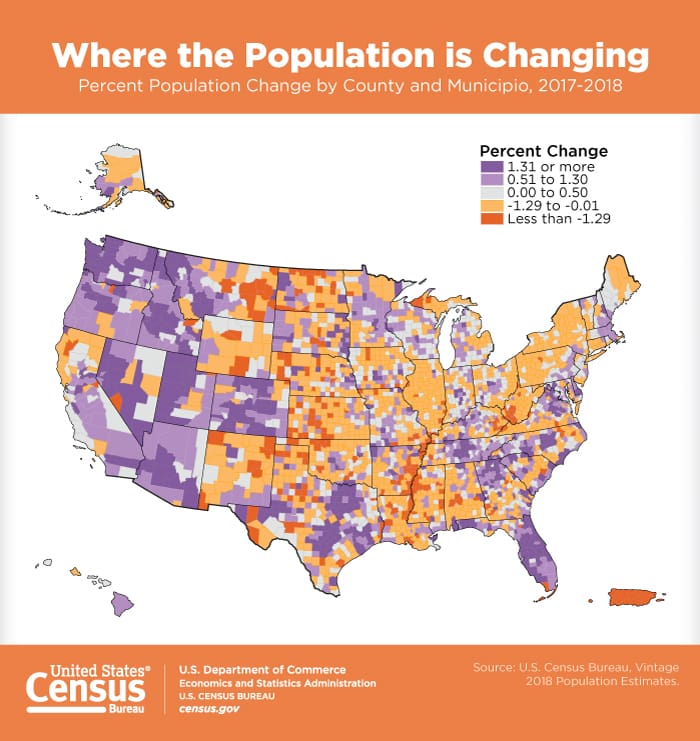The U.S. Census Bureau released its estimates for 2018, and Cobb County stands at 756,865. Cobb slightly edges out Dekalb for third place behind Fulton and Gwinnett counties.
Fulton, at 1,050,114, Gwinnett, at 927,781, Cobb, at 756,865, and Dekalb, at 756,558 are the only Georgia counties to exceed 300,000 in population. Fifth place Clayton has an estimated population of 289,615.
The South and West still have fastest-growing counties
Consistent with previous estimates, the South and West still have the fastest-growing counties.
Texas, in particular, fared well in counties with the greatest numeric increase in population. The summary released by the Census Bureau states:
Counties with the largest numeric growth are all located in the south and the west, with counties in Texas taking four out of the top 10 spots according to new U.S. Census Bureau population estimates released today. By metropolitan area, Dallas-Fort Worth-Arlington, Texas, had the largest numeric growth with a gain of 131,767 (1.8 percent) in 2018, followed by Phoenix-Mesa-Scottsdale, Ariz. with an increase of 96,268 (2.0 percent). Migration, both domestic and international, as well as natural increase contributed to the growth in each of these areas, with natural increase serving as the largest source of population growth in Dallas and domestic migration serving as the largest source in Phoenix.
Sandra Johnson, a demographer in the Census Bureau’s Population Division, said in the summary, “One interesting trend we are seeing this year is that metro areas not among the most populous are ranked in the top 10 for population growth.
“Though no new metro areas moved into the top 10 largest areas,” she said, “Phoenix, Seattle, Austin, and Orlando all experienced numeric increases in population since 2010, rivaling growth in areas with much larger populations. This trend is consistent with the overall growth we are seeing in the south and the west.”
Map of population growth or loss
The report also contained a color-coded map of the U.S. showing what counties had population growth and loss:

